Racism is discrimination and prejudice towards people based on their race or ethnicity. Today, the use of the term „racism“ does not easily fall under a single definition.
The ideology underlying racist practices often includes the idea that humans can be subdivided into distinct groups that are different in their social behavior and innate capacities and that can be ranked as inferior or superior.
The Holocaust is the classic example of institutionalized racism which led to the death of millions of people based on their race. While the concepts of race and ethnicity are considered to be separate in contemporary social science, the two terms have a long history of equivalence in both popular usage and older social science literature. „Ethnicity“ is often used in a sense close to one traditionally attributed to „race“: the division of human groups based on qualities assumed to be essential or innate to the group.
Therefore racism and racial discrimination are often used to describe discrimination on an ethnic or cultural basis, independent of whether these differences are described as racial. Racist ideology can become manifest in many aspects of social life. Racism can be present in social actions, practices, or political systems that support the expression of prejudice or aversion in discriminatory practices. Associated social actions may include nativism, xenophobia, otherness, segregation, hierarchical ranking, supremacism, and related social phenomena.
Humanism is a philosophical and ethical stance that emphasizes the value and agency of human beings, individually and collectively, and affirms their ability to improve their lives through the use of reason and ingenuity as opposed to submitting blindly to tradition and authority or sinking into cruelty and brutality.
The term was coined in 1808 by the early nineteenth century German educational reformer and theologian Friedrich Niethammer and gradually adopted into English. Niethammer had wished to introduce into German education the humane values of ancient Greece and Rome.
Niethhammer was a Lutheran theologian. Since the twentieth century, however, Anglophone humanist movements have usually been aligned with secularism, and today humanism typically refers to a non-theistic life stance centred on human agency and looking to science rather than revelation from a supernatural source to understand the world.
Modern humanists hold that humanity must seek for truth through reason and the best observable evidence and endorse scientific skepticism and the scientific method.
The ultimate goal is human flourishing; making life better for all humans, and as the most conscious species, also promoting concern for the welfare of other sentient beings and the planet as a whole. The focus is on doing good and living well in the here and now, and leaving the world a better place for those who come after.



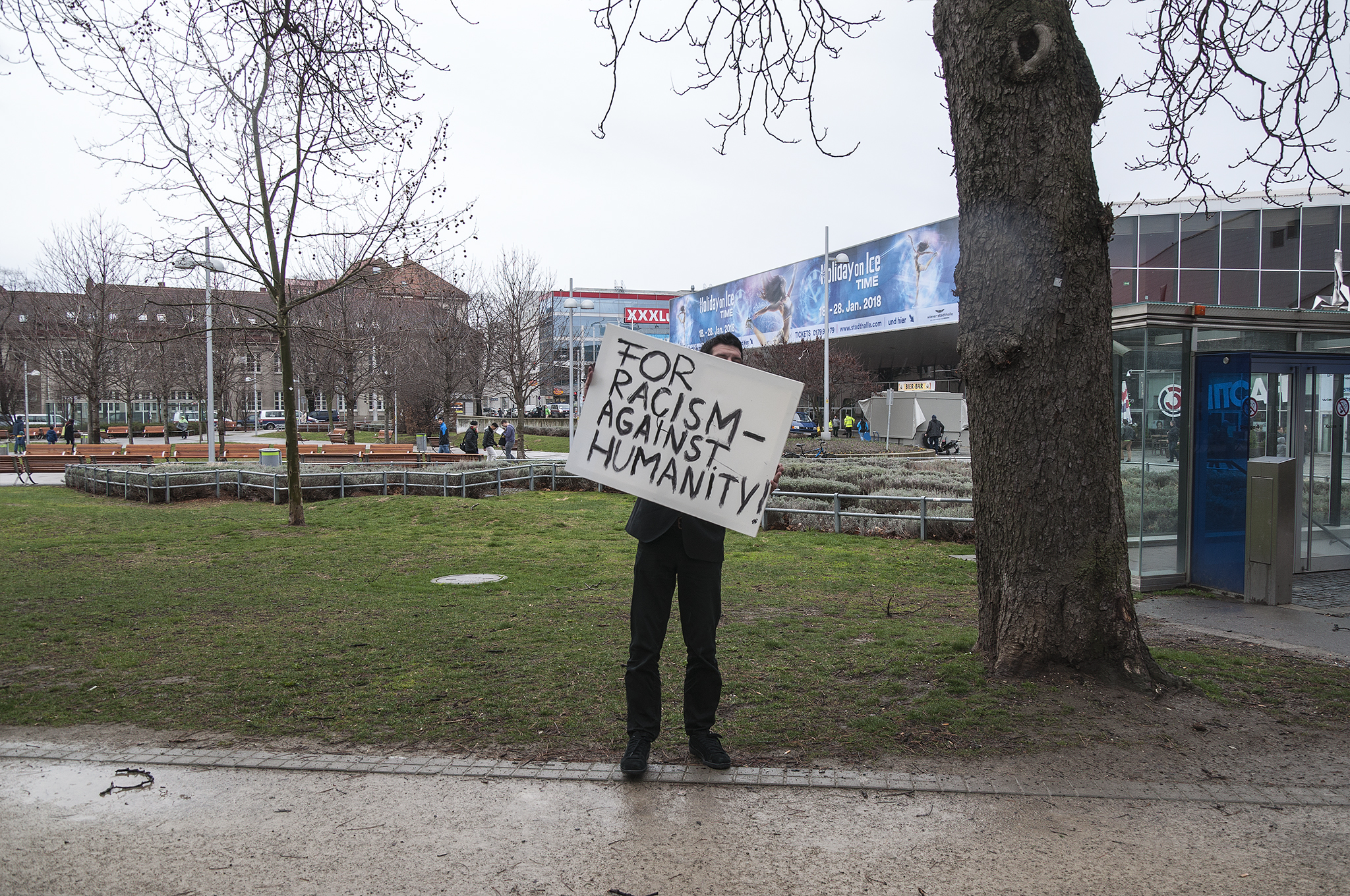

MIRROR IMAGE (2017)
„The Stupidy Within the Opposite of a Rational Argument.“
Or: „How to reflect home state secretary´s politics on canvas and receive an order fine from his own minions for doing so.“
Public action in Vienna, Austria on 19.03.2017
during International Anti Racism Day –
Video- and Photo Documentation.
Performer:
Rahman HAK-HAGIR
Photography:
Andreas DRAXLER
Camera:
Andreas DRAXLER
Tanja HAPPEL

Social Mirror Theory (SMT) states that people are not capable of self-reflection without taking into consideration a peer’s interpretation of the experience. In other words, people define and resolve their internal musings through other’s viewpoint.
Burgoon and Hale (1984) conceptualized relational communication as the verbal and nonverbal themes present in people’s communication that define an interpersonal relationship.
Expectancy Violations Theory (EVT) is a theory of communication that analyzes how individuals respond to unanticipated violations of social norms and expectations. The theory sees communication as an exchange of behaviors, where one individual’s behavior can be used to violate the expectations of another. Participants in communication will perceive the exchange either positively or negatively, depending upon an existing personal relationship or how favorably the violation is perceived.

MIRROR IMAGE (2017)
„The Stupidy Within the Opposite of a Rational Argument.“
Or: „How to reflect home state secretary´s politics on canvas and receive an order fine from his own minions for doing so.“
Public action in Vienna, Austria on 19.03.2017
during International Anti Racism Day –
Video- and Photo Documentation.
Performer:
Rahman HAK-HAGIR
Photography:
Andreas DRAXLER
Camera:
Andreas DRAXLER
Tanja HAPPEL
RAHMAN HAK-HAGIR (May 15, 1972) is an Austrian-born Vienna-based half-afghan conceptual and performance artist; focussing on the conflicting priorities between individual and social environment and a founding member of the international artist collective, known as THE OTHER SOCIETY.
TANJA HAPPEL is an austrian born, vienna based artist and social activist who studied design, architecture and environment for art pedagogy at the university for applied arts in vienna. Her work is focussing on social and aesthetically interfaces. Tanja Happel is a member of the international artist collective known as THE OTHER SOCIETY.
ANDREAS DRAXLER is an Austrian performance artist and film maker who´s work is aiming on providing a holistic understanding of social symptoms and their effects on the individual as a fragment of its cultural habitat. He is a member of the international artist collective known as THE OTHER SOCIETY.
THE OTHER SOCIETY (founded in may 2013) is an INTERNATIONAL ARTIST COLLECTIVE and ARTISTIC UTOPIA that sends out clues and messages to the real world to prosper.
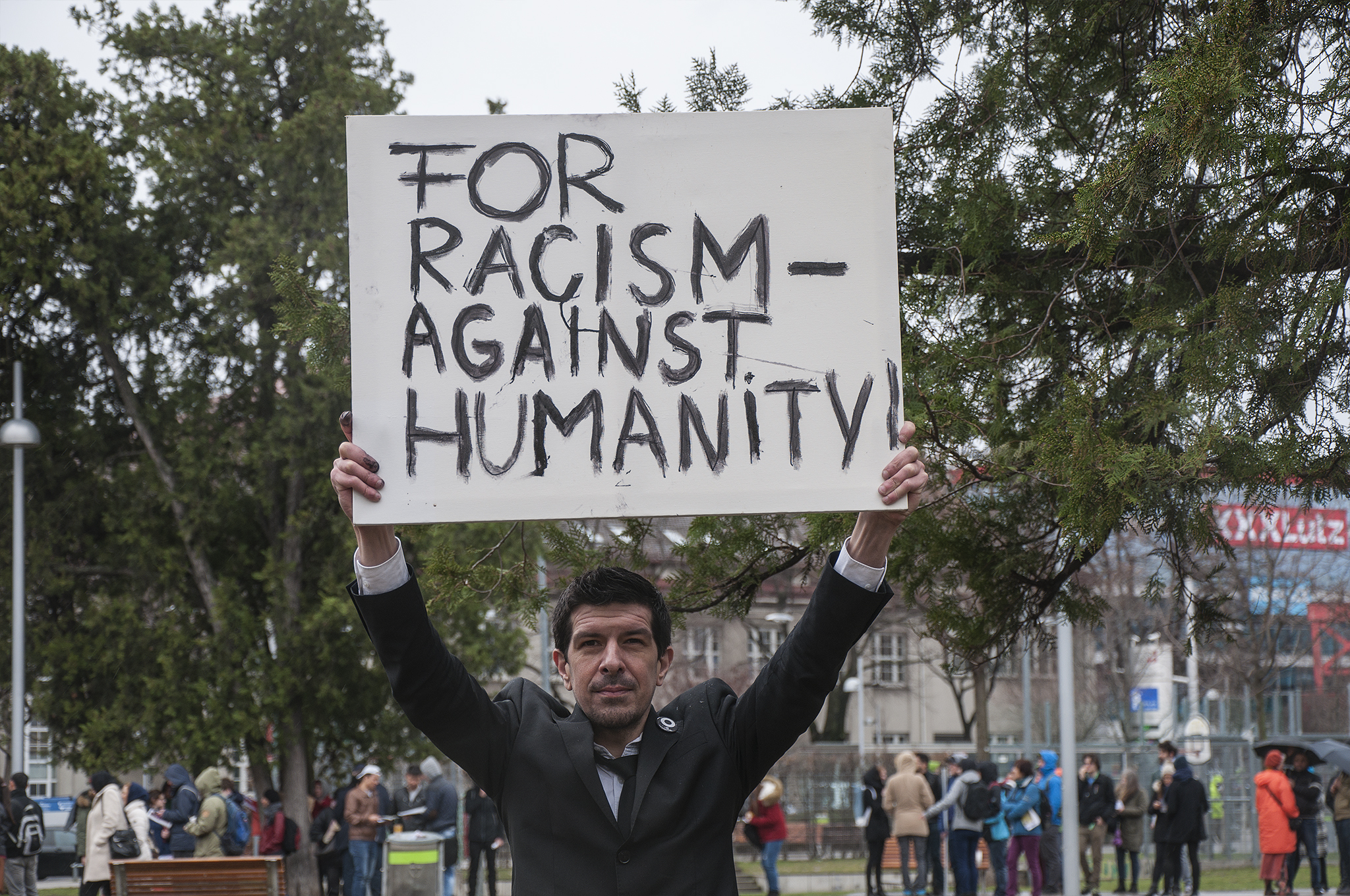
MIRROR IMAGE (2017)
„The Stupidy Within the Opposite of a Rational Argument.“
Or: „How to reflect home state secretary´s politics on canvas and receive an order fine from his own minions for doing so.“
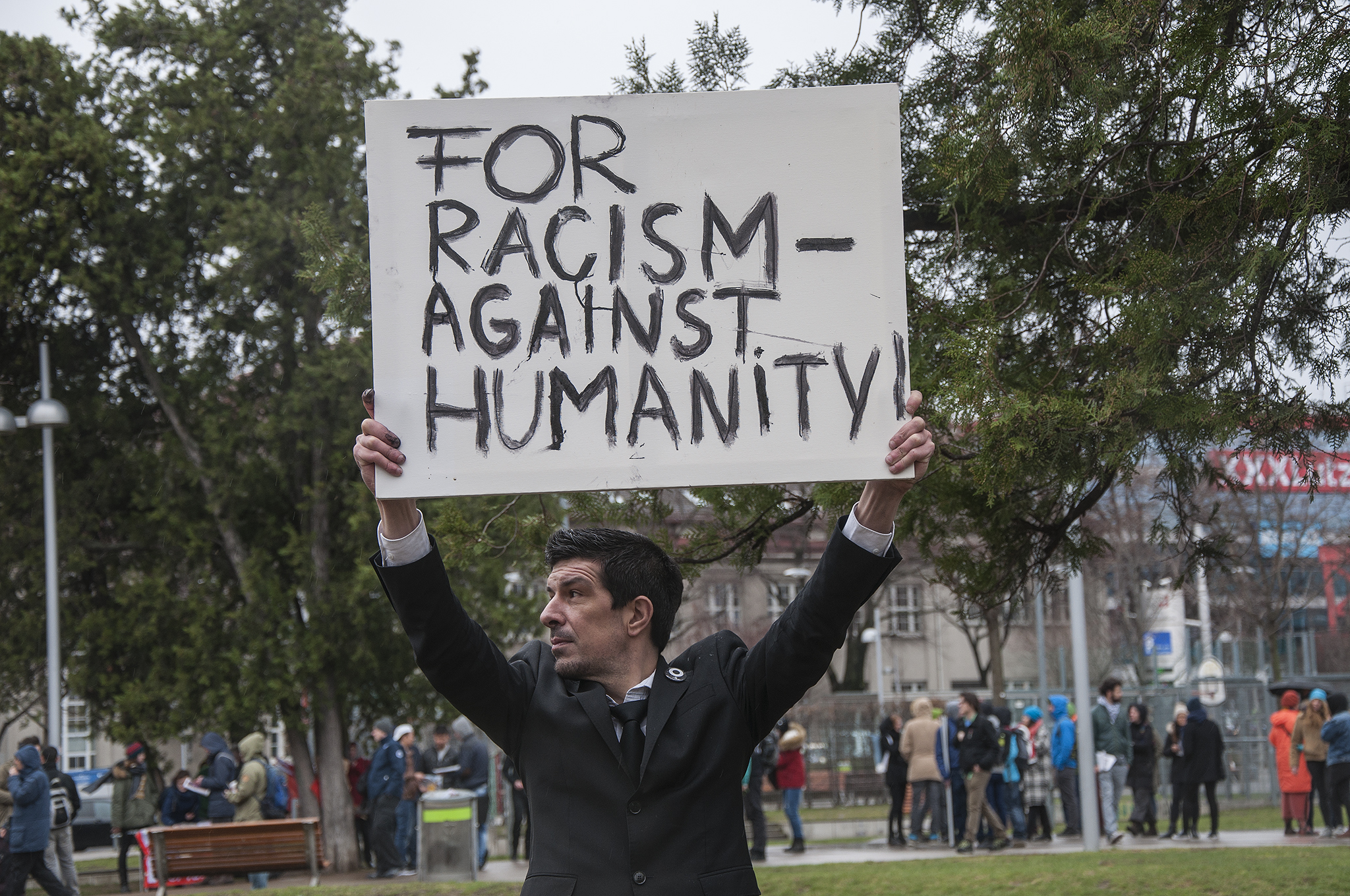
MIRROR IMAGE (2017)
„The Stupidy Within the Opposite of a Rational Argument.“
Or: „How to reflect home state secretary´s politics on canvas and receive an order fine from his own minions for doing so.“

Public action in Vienna, Austria on 19.03.2017
during International Anti Racism Day –
Video- and Photo Documentation.
Performer:
Rahman HAK-HAGIR
Photography:
Andreas DRAXLER
Camera:
Andreas DRAXLER
Tanja HAPPEL

Burggasse / Märzpark, Vienna-Austria | 19th of March 2017 | 14:30h

„Also ehrlich gesagt hätte ich mir schon ein bisschen mehr Widerstand erwartet Leute.“

„Schöne Grüße vom Innenministerium.“

„Dieses Schild wurde mit Ihren Steuergeldern gemalt.“

Rahman Hak-Hagir – MIRROR IMAGE (2017)
Action | Video Stills | CHART #1

Rahman Hak-Hagir – MIRROR IMAGE (2017)
Action | Video Stills | CHART #2

Rahman Hak-Hagir – MIRROR IMAGE (2017)
Action | Video Stills | CHART #3

MIRROR IMAGE (2017)
„The Stupidy Within the Opposite of a Rational Argument.“
Or: „How to reflect home state secretary´s politics on canvas and receive an order fine from his own minions for doing so.“
Public action in Vienna, Austria on 19.03.2017
during International Anti Racism Day –
Video- and Photo Documentation.
Performer:
Rahman HAK-HAGIR
Photography:
Andreas DRAXLER
Camera:
Andreas DRAXLER
Tanja HAPPEL

Rahman Hak-Hagir – MIRROR IMAGE (2017)
„The Stupidy Within the Opposite of a Rational Argument.“

Rahman Hak-Hagir – MIRROR IMAGE (2017)
„The Stupidy Within the Opposite of a Rational Argument.“

MIRROR IMAGE (2017)
„The Stupidy Within the Opposite of a Rational Argument.“
Or: „How to reflect home state secretary´s politics on canvas and receive an order fine from his own minions for doing so.“

Public action in Vienna, Austria on 19.03.2017
during International Anti Racism Day –
Video- and Photo Documentation.
Performer:
Rahman HAK-HAGIR
Photography:
Andreas DRAXLER
Camera:
Andreas DRAXLER
Tanja HAPPEL
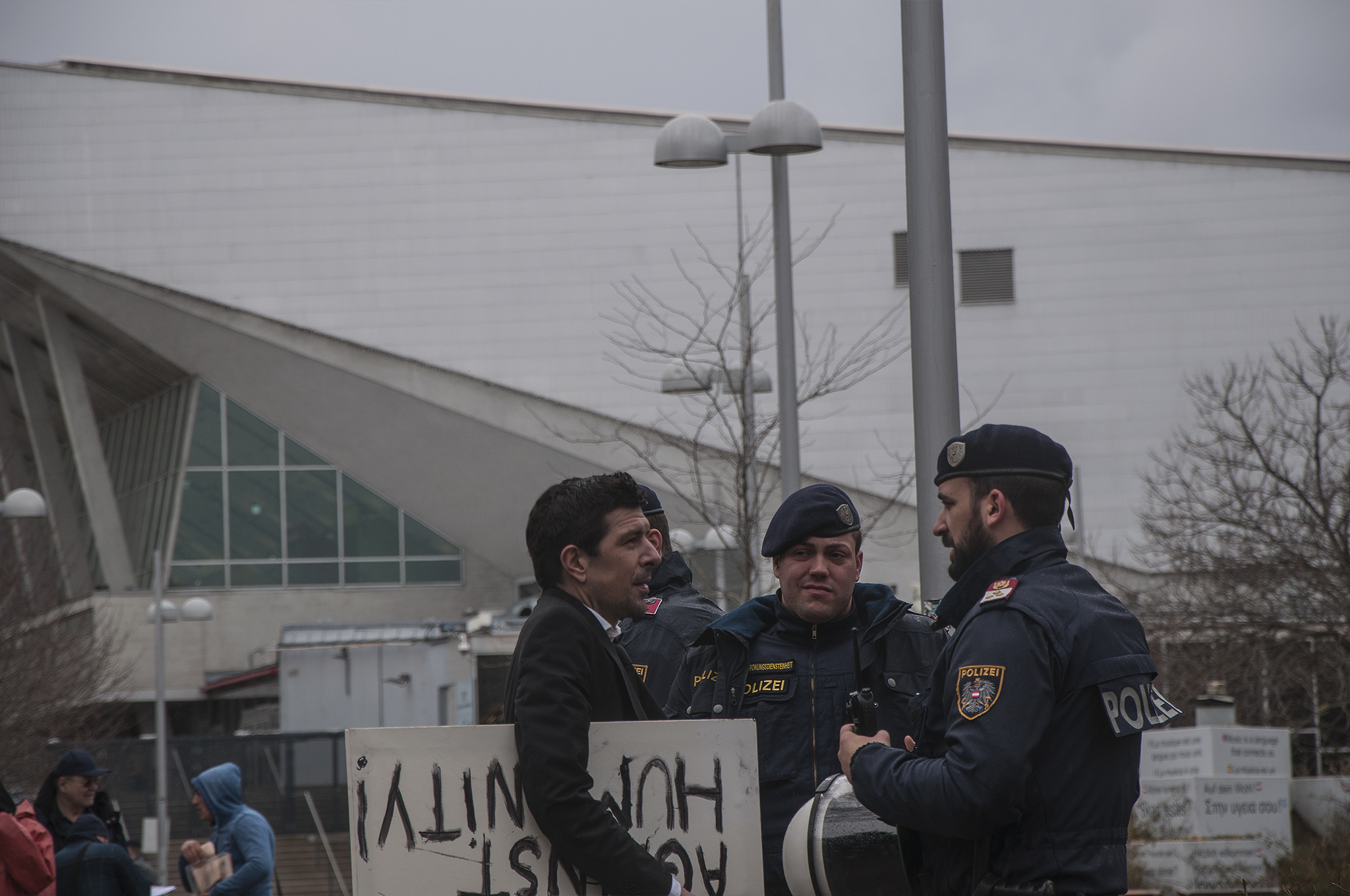
Rahman Hak-Hagir – MIRROR IMAGE (2017)
„The Stupidy Within the Opposite of a Rational Argument.“
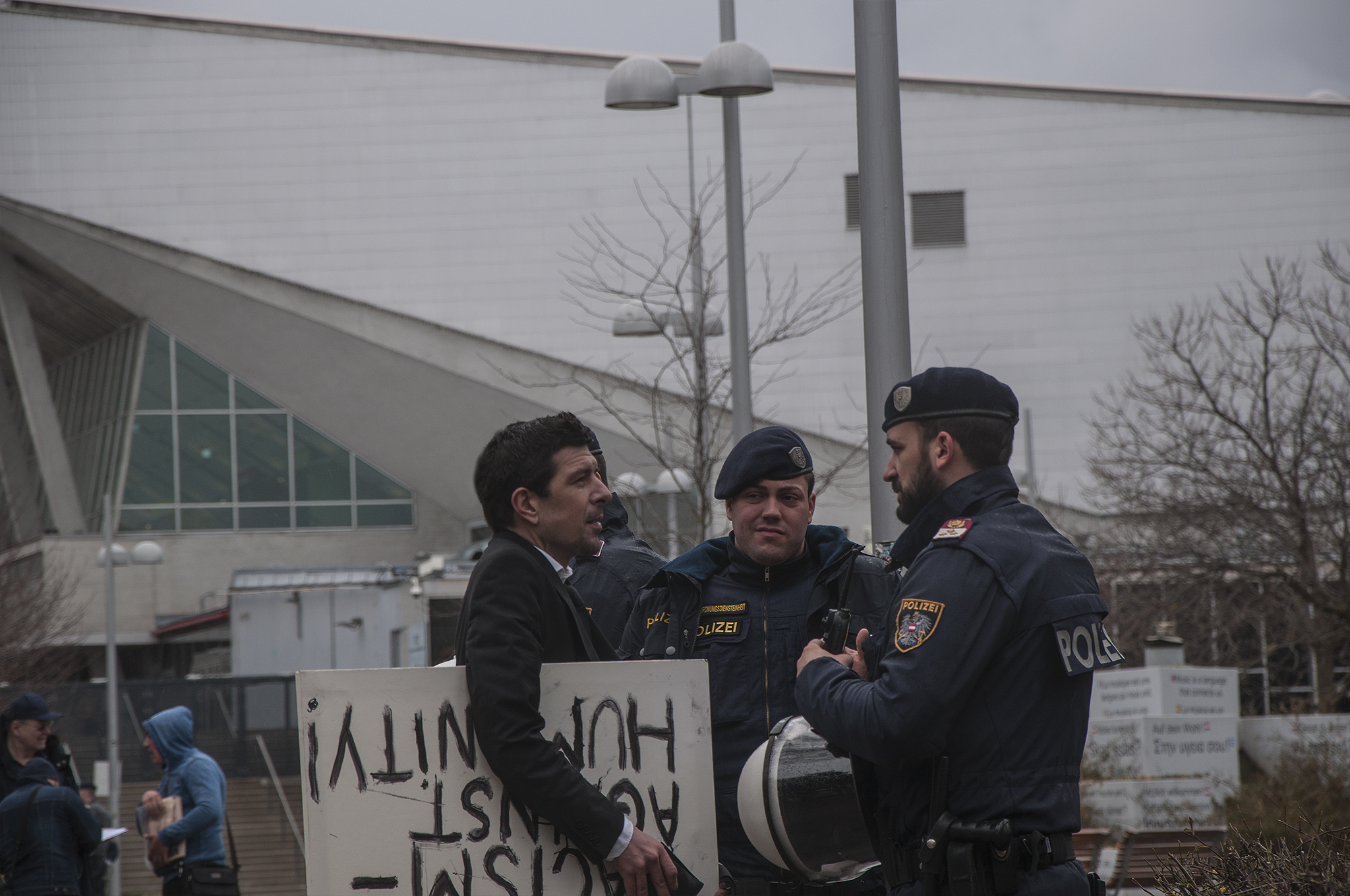
Rahman Hak-Hagir – MIRROR IMAGE (2017)
„The Stupidy Within the Opposite of a Rational Argument.“

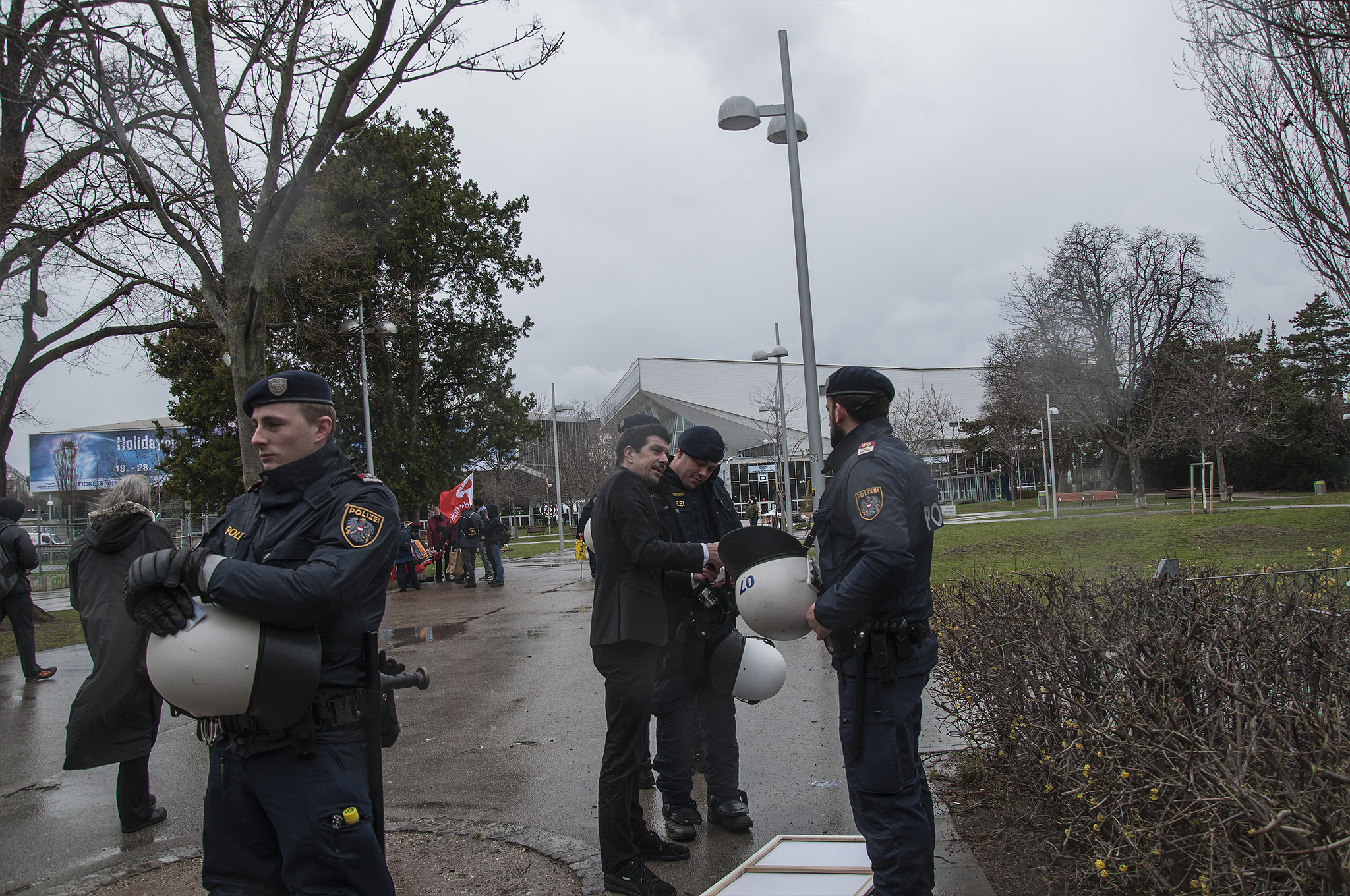
Rahman Hak-Hagir – MIRROR IMAGE (2017)
„The Stupidy Within the Opposite of a Rational Argument.“
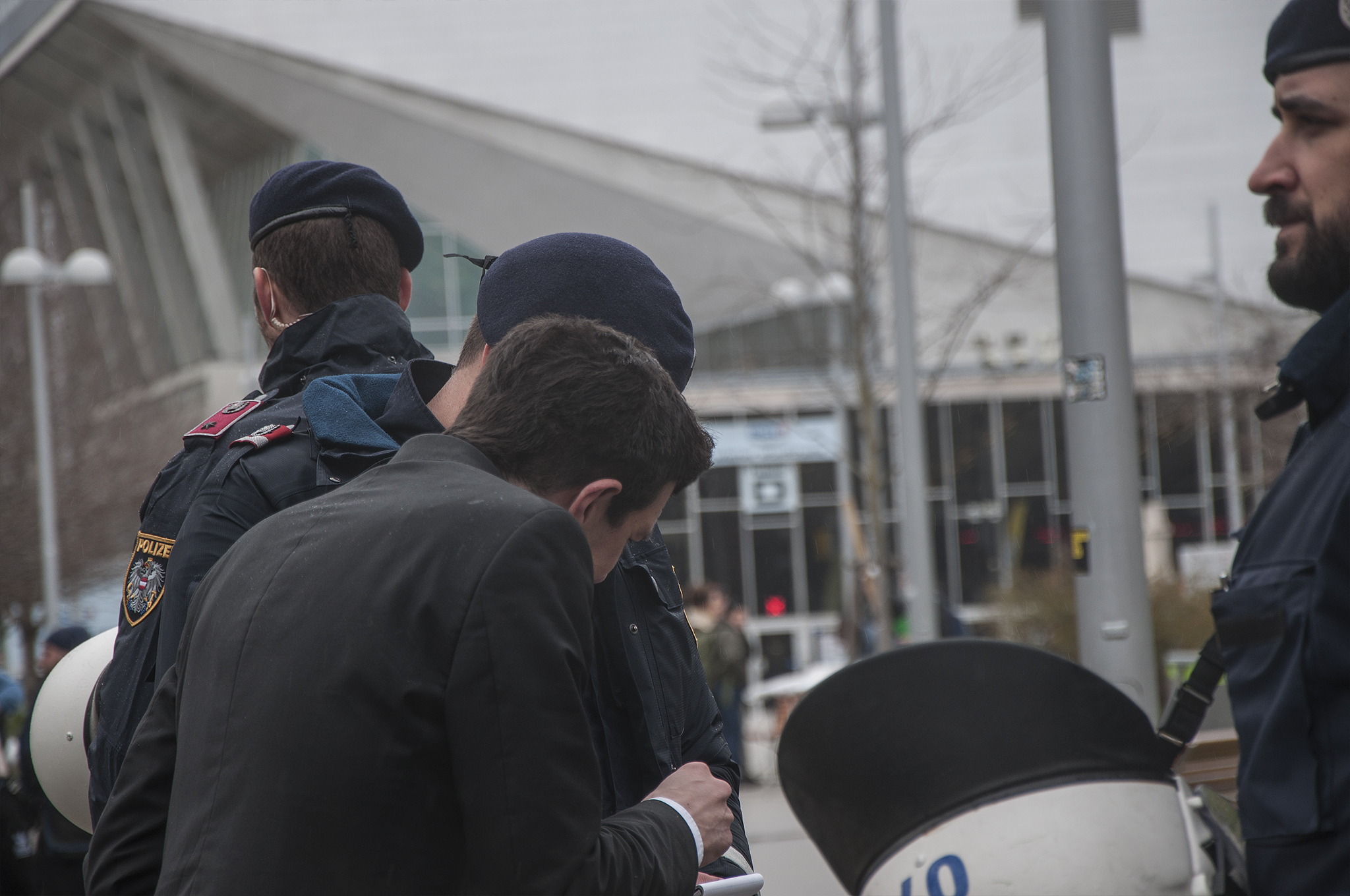
Rahman Hak-Hagir – MIRROR IMAGE (2017)
„The Stupidy Within the Opposite of a Rational Argument.“

MIRROR IMAGE (2017)
„The Stupidy Within the Opposite of a Rational Argument.“
Or: „How to reflect home state secretary´s politics on canvas and receive an order fine from his own minions for doing so.“
Public action in Vienna, Austria on 19.03.2017
during International Anti Racism Day –
Video- and Photo Documentation.
Performer:
Rahman HAK-HAGIR
Photography:
Andreas DRAXLER
Camera:
Andreas DRAXLER
Tanja HAPPEL

MIRROR IMAGE (2017)
„The Stupidy Within the Opposite of a Rational Argument.“
Or: „How to reflect home state secretary´s politics on canvas and receive an order fine from his own minions for doing so.“

MIRROR IMAGE (2017)
„The Stupidy Within the Opposite of a Rational Argument.“
Or: „How to reflect home state secretary´s politics on canvas and receive an order fine from his own minions for doing so.“
Public action in Vienna, Austria on 19.03.2017
during International Anti Racism Day –
Video- and Photo Documentation.
Performer:
Rahman HAK-HAGIR
Photography:
Andreas DRAXLER
Camera:
Andreas DRAXLER
Tanja HAPPEL
RAHMAN HAK-HAGIR (May 15, 1972) is an Austrian-born Vienna-based half-afghan conceptual and performance artist; focussing on the conflicting priorities between individual and social environment and a founding member of the international artist collective, known as THE OTHER SOCIETY.
TANJA HAPPEL is an austrian born, vienna based artist and social activist who studied design, architecture and environment for art pedagogy at the university for applied arts in vienna. Her work is focussing on social and aesthetically interfaces. Tanja Happel is a member of the international artist collective known as THE OTHER SOCIETY.
ANDREAS DRAXLER is an Austrian performance artist and film maker who´s work is aiming on providing a holistic understanding of social symptoms and their effects on the individual as a fragment of its cultural habitat. He is a member of the international artist collective known as THE OTHER SOCIETY.
THE OTHER SOCIETY (founded in may 2013) is an INTERNATIONAL ARTIST COLLECTIVE and ARTISTIC UTOPIA that sends out clues and messages to the real world to prosper.
Aktionskunst (Aktionismus) ist ein Oberbegriff für eine Reihe von Strömungen der Kunst des 20. Jahrhunderts, die die klassischen Formen der bildenden Kunst überschritten und um andere mediale und performative Ausdrucksformen erweiterten. Damit stellten sie sich in einen Widerspruch zu dem oft als zu konventionell und eng empfundenen Begriff von Kunst und Kunstbetrieb. In Wien fand die Aktionskunst in den 1960er Jahren ihren Ausdruck in dem Wiener Aktionismus.
Die Aktionskunst ist ein Vorläufer der künstlerischen Performance und lässt sich von ihr nicht immer eindeutig unterscheiden.
Bei Aktionskunst kommen sowohl klassische Arbeitsweisen der bildenden Kunst zum Einsatz wie Malerei und Bildhauerei, als auch neuere Medien wie Fotografie, Film, Video.
In der Aktionskunst ist nicht selten der Künstler selber Bestandteil des Werkes und sein Körper künstlerisches Medium. Während für ein klassisches Kunstverständnis die Trennung von Subjekt und Objekt Voraussetzung ist, indem der Künstler ein von ihm ablösbares Artefakt schafft, geht es in der Aktionskunst um Handlungen, in die die Künstler unmittelbar involviert sind. Durch extreme Handlungen werden beim Zuschauer unmittelbar affektive und emotionale Reaktionen ausgelöst.
Kommentar der anderen:
Caspar Einem
23. März 2017, im Standard:
LINK ZUM ARTIKEL

